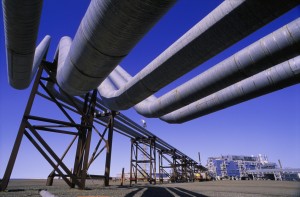By Dan Ritzman, Alaska program director for the Sierra Club’s Resilient Habitats Campaign and guide for Arctic Wild.
Just one day after a drilling well explosion on Alaska’s North Slope, the House of Representatives voted to open 1.5 million acres of the pristine Arctic National Wildlife Refuge to oil and gas drilling. Unable to find enough votes to pass drilling measures as part of a comprehensive transportation bill, House leadership has resorted to political gimmicks to further the agenda of Big Oil.
The Refuge is home to the greatest diversity of animals of any protected area in the entire circumpolar region, including polar bears, caribou and birds from every state. For the past 50 years our country has remained committed to protecting this unparalleled area. Its wonders have been recognized for centuries by Alaska Natives like the Gwich’in and Inupiat people who still rely on its wildlife for survival.
Opening this special area to drilling is a huge risk for highly speculative and insufficient revenues. To understand what’s at stake you need only look as far as Prudhoe Bay, where less than 100 miles west of the Arctic Refuge drilling has created one of the world’s largest industrial complexes. Hundreds of spills occur in the area each year polluting waterways, damaging the land and harming wildlife. A similar fate awaits the Refuge if this bill is made into law—all to generate revenue that will come too late to fund this bill and won’t be enough to fill the funding gap.
But the House didn’t stop there. They also voted to offer up millions of acres of protected offshore federal waters in the Atlantic, Pacific and Arctic Oceans and Alaska’s Bristol Bay to the oil industry. The fishery in Bristol Bay alone generates billions of dollars annually and communities all along the Arctic coast depend on whales, fish and other ocean bounty for subsistence. A major spill could leave oil in these waters for years. The shifting ice floes, sub-zero temperatures, and months of darkness make an oil spill in Arctic waters impossible to clean up.
I have been fortunate in my life to spend time in America’s Arctic in northern Alaska. This remote region is one of the wildest spots left on the globe. I have experienced first-hand the harshness and fragility of this special place which is unlike any other. I’ve watched walrus gather on ice floes, puffins “fly” through the water, and polar bears prowl the ice edge. While watching more than 100,000 caribou move across the tundra followed by wolves and grizzly bears I experienced an inkling of what Lewis and Clark must have felt as they encountered the large bison herds in the Great Plains. I have traveled with Alaska Native people, who have lived on these lands and waters for hundreds of generations, and listened as they describe their connections to this land and the importance of these animals to their culture and subsistence. Some places are too special to drill and the Arctic Refuge is one of them.
Though the oil industry continues to downplay its abysmal spill record, the most recent well explosion reminds us that drilling is a dangerous and dirty business. New drilling comes with a lot of risk, but little benefit for the transportation bill. We must invest in transportation, but we don’t have to threaten our nation’s wildest areas or rely on unsound financing to do so. Congress should be looking for ways to make our cars cleaner and more efficient and expand our transportation choices, not making us more dependent on Big Oil.
The preceding commentary was first published in The Hill and in Alaska Dispatch.
The views expressed by the author are enthusiastically endorsed by Arctic Wild.



